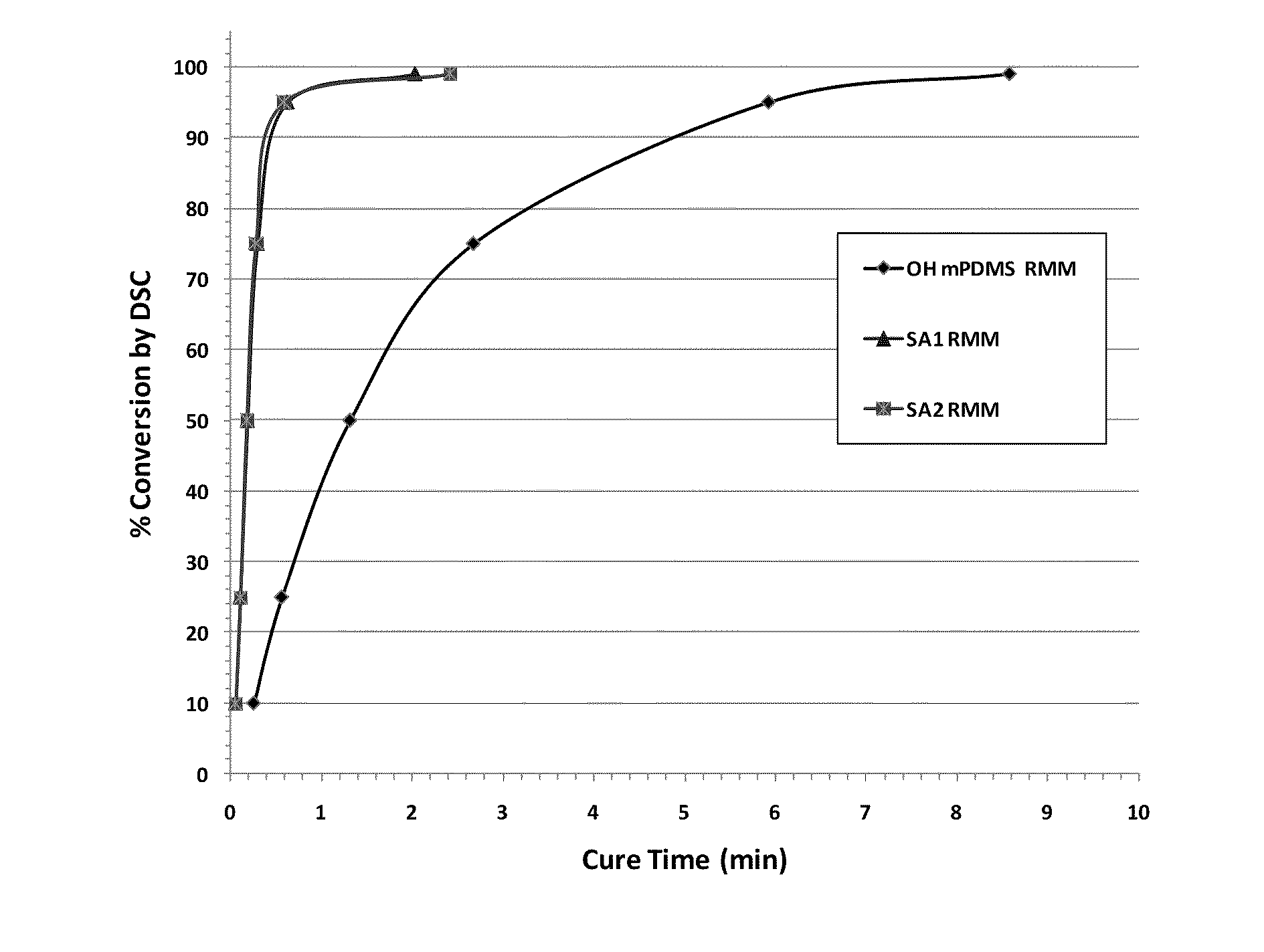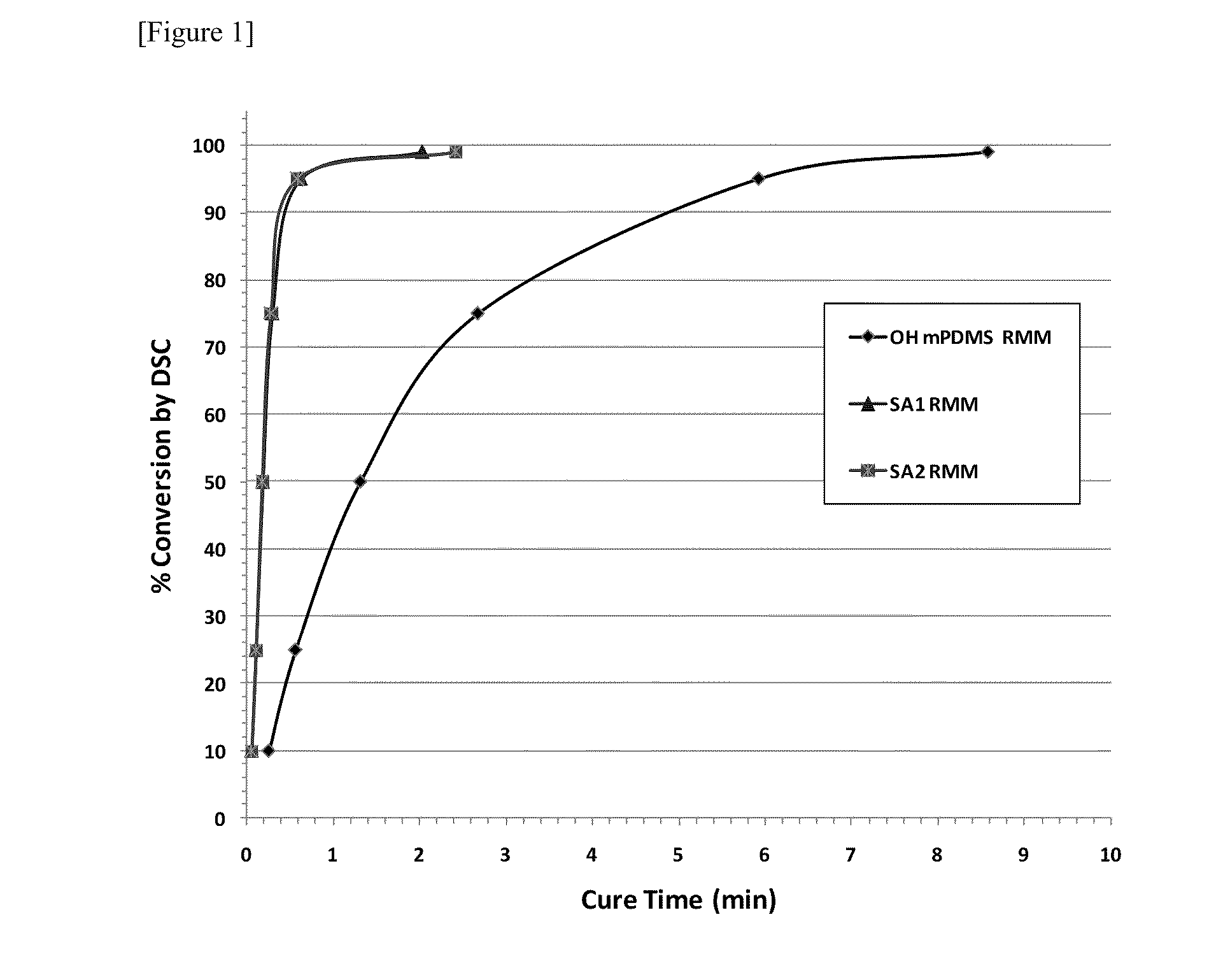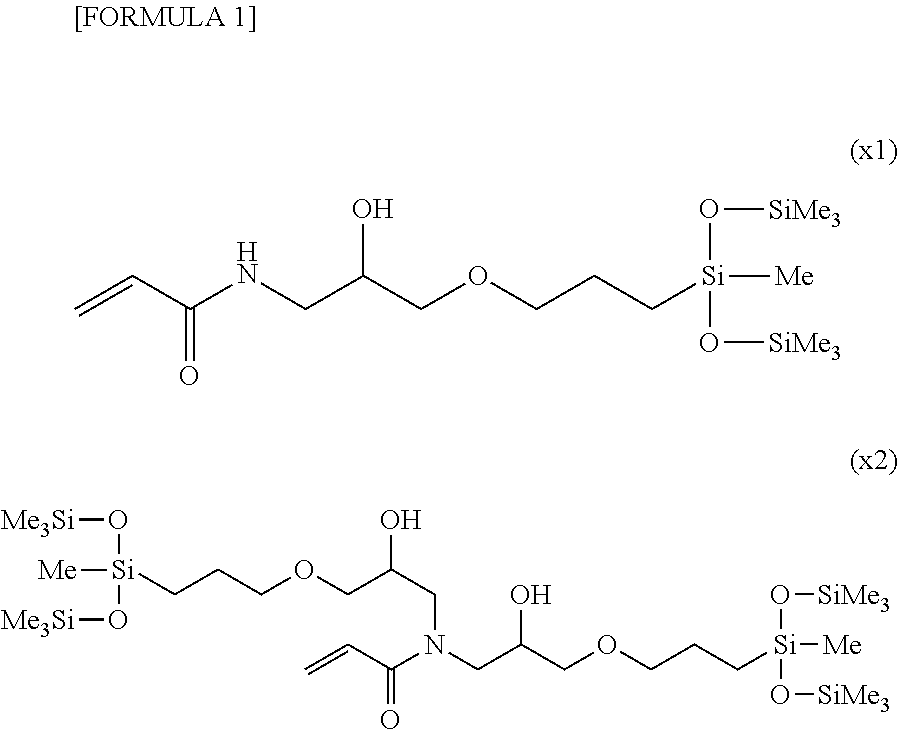Silicone (METH)acrylamide monomer, polymer, ophthalmic lens, and contact lens
a technology of acrylamide monomer and ophthalmic lens, which is applied in the field of silicone (meth)acrylamide monomer, polymer, ophthalmic lens, contact lens, etc., can solve the problems of inferior compatibility with hydrophilic substances, increased hydrophobicity, and inferior shape recovery properties of polymers obtained by polymerizing these monomers
- Summary
- Abstract
- Description
- Claims
- Application Information
AI Technical Summary
Benefits of technology
Problems solved by technology
Method used
Image
Examples
synthesis example 1
[0102]28 to 30 weight percent ammonia water (320 mL) and methanol (48 mL) were placed in a 500 mL 4-necked flask, and a mechanical stirrer, dropping funnel, reflux condenser, and glass stopper were attached. A solution of allyl glycidyl ether (59.6 g, 0.522 mol) / methanol (48 mL) was added dropwise into the flask over the course of approximately 9 hours while maintaining the 4-necked flask at a temperature of approximately 25° C. using a circulator. Completion of the reaction was confirmed using GC.
[0103]After the reaction was complete, the reaction solution was concentrated in an evaporator. The liquid obtained was purified using distillation under reduced pressure (full vac., 81° C.). The yield was 31.6 g (46.1% yield) and the GC purity was 99.0%.
synthesis example 2
[0104]The compound obtained in synthesis example 1 (30.0 g, 0.229 mol), hexamethyldisilazane (22.2 g, 0.137 mol), BHT (0.09 g), and saccharine (0.09 g) were placed in a 200 mL 4-necked flask and mixed for 2 hours at 100° C.
[0105]The reaction was ended after confirming the elimination of the raw material peaks using GC measurement. After purifying by distillation under reduced pressure (full vac., 72° C.), the yield was 39.0 g (yield rate 83.9%), and the GC purity was 99.4%.
synthesis example 3
[0106]The compound obtained by synthesis example 2 (38.0 g, 0.187 mol), 1-n-butyl-1,1,3,3,5,5,7,7,9,9-decamethylpentasiloxane expressed by the following formula
(hereinafter referred to as “SiL5B”) (77.2 g, 0.187 mol), a 0.104 M methylvinyl cyclosiloxane solution of platinum (0) 2,4,6,8-tetramethyl-2.4.6.8-tetravinyl cyclotetrasiloxane complex (manufactured by Aldrich Corp., hereinafter referred to as “platinum tetra solution”) (610 μL, and toluene (370 μL) were placed in a 200 mL 4-necked flask, and then heated to 120° C. and mixed.
[0107]After 2 hours, an additional 610 μL of platinum tetra solution was added because raw material was found to be remaining by the GC measurement, and the reaction was continued for another hour. After confirming elimination of the raw materials by GC, the solution was cool to room temperature and concentrated in an evaporator. The liquid obtained was purified by distillation under reduced pressure (8×10−2 Pa, 156° C.) using an oil diffusion pump. The y...
PUM
| Property | Measurement | Unit |
|---|---|---|
| weight % | aaaaa | aaaaa |
| hydrophilic | aaaaa | aaaaa |
| shape recovery properties | aaaaa | aaaaa |
Abstract
Description
Claims
Application Information
 Login to View More
Login to View More - R&D
- Intellectual Property
- Life Sciences
- Materials
- Tech Scout
- Unparalleled Data Quality
- Higher Quality Content
- 60% Fewer Hallucinations
Browse by: Latest US Patents, China's latest patents, Technical Efficacy Thesaurus, Application Domain, Technology Topic, Popular Technical Reports.
© 2025 PatSnap. All rights reserved.Legal|Privacy policy|Modern Slavery Act Transparency Statement|Sitemap|About US| Contact US: help@patsnap.com



